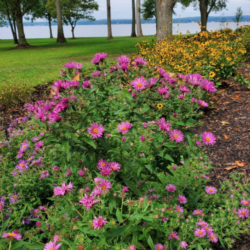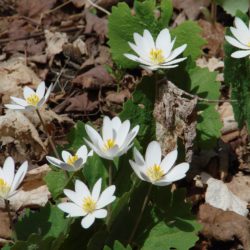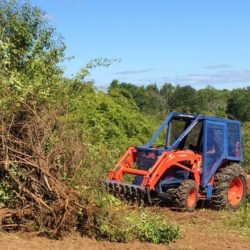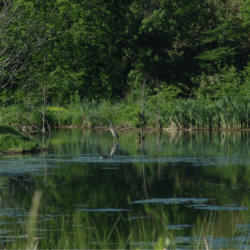Written by: Will Larson Growing native plants from seed is a constant exercise in replicating habitat. We expose the seed to specific pre-treatment conditions to simulate the contexts and pressures…
Land Management
As Things Always Change, the Nature of Nature Remains the Same
By Kelsey Skaroff
2020 was obviously a remarkable year for many in adjusting work, relationships, and life in general in response to a pandemic, social justice movements, the economy, climate change, and politics. After a brief moment of uncertainly my job as Head Gardner went on as normal in this most unusual year.
A Stick in the Spokes
By Laura Kuhn
What if humans disappeared tomorrow? The temperate forest of the US Northeast would quickly return to the forest it wants to be. Every garden is, by virtue of human influence, an interventionist act. We as ecological designers face a balancing act of pleasing our clients and letting nature be wild.
Reducing Invasive Plants and Recovering a Healthy Plant Community
By Ellen Snyder
In southeastern New Hampshire, where I work with landowners and communities on land stewardship, managing invasive plants is a constant struggle. As the Land Stewardship Coordinator for the Town of Durham, I’m guiding three restoration projects on town conservation land. It was hard not to be overwhelmed by the pervasiveness of invasive plants on all three properties. To avoid invasive paralysis, I keep my focus on the goal: restoration of a place to a mostly self-sustaining, healthy plant community. The reward is a restored landscape brimming with native plants and native beneficial insects.
Restoring the Wetlands of Morris Arboretum
by Eloise Gayer
Morris Arboretum of the University of Pennsylvania is well known for its abundance of mature trees and horticultural displays. In 2001 the Arboretum began the restoration of a drained wetland that would not only serve as a blueprint for other wetland restoration projects but also create more educational opportunities for the entire community. Learn about the history of this wetland, that was farmland at the turn of the century then one hundred years later was reverted back into a natural wetland.
Book Review: Fruitful Labor
Fruitful Labor: The Ecology, Economy and Practice of a Family Farm Written by Mike Madison Published by Chelsea Green Publishing, 2018 Reviewed by Rhiannon Lewis Mike Madison is a farmer,…
Moving the Ball Forward: Making Green the Standard
by CJ Lammers In 1999, I started experiencing what Western medicine could only define as “frozen shoulder.” I couldn’t raise my arms above my head or dress myself. It was…
Book Review: Two Percent Solutions for the Planet
Two Percent Solutions for the Planet: 50 Low-Cost, Low-Tech, Nature-Based Practices for Combatting Hunger, Drought, and Climate Change Written by Courtney White Published by Chelsea Green Publishing, 2015 Reviewed by…
Taking it to the Extremes
by Sandy Vorce “How do you plan for Climate Change and all the wild weather?” This was a question recently posed by several college students who came to help out…
A Synopsis of Prescribed Fire in New England
by Joel R. Carlson Prescribed fire has been defined as any fire ignited by management actions to meet specific objectives, additionally a written approved prescribed fire plan must exist with…





